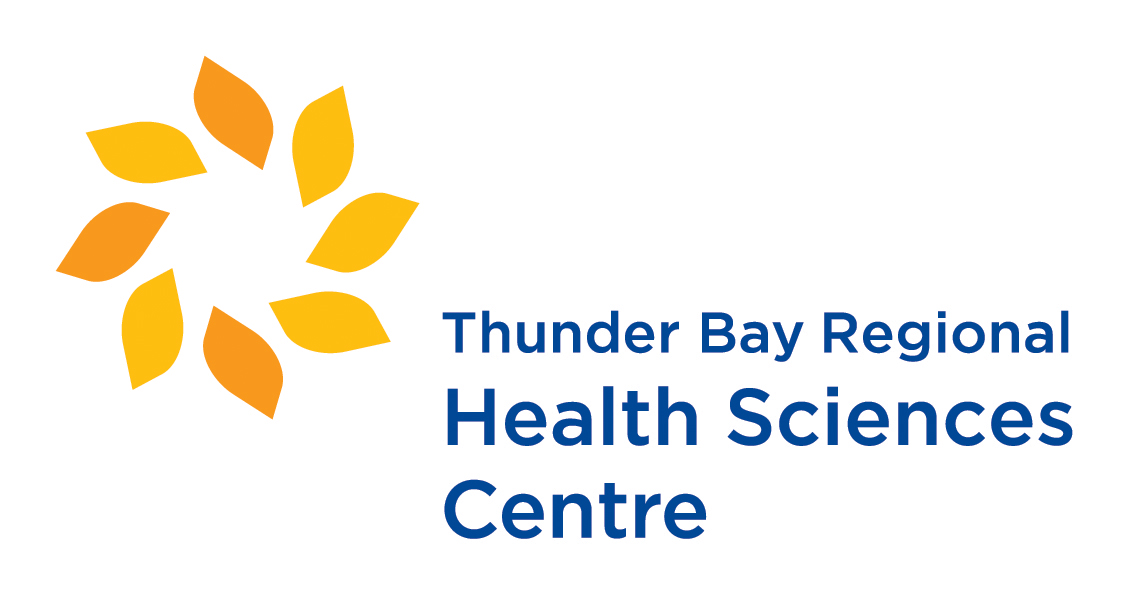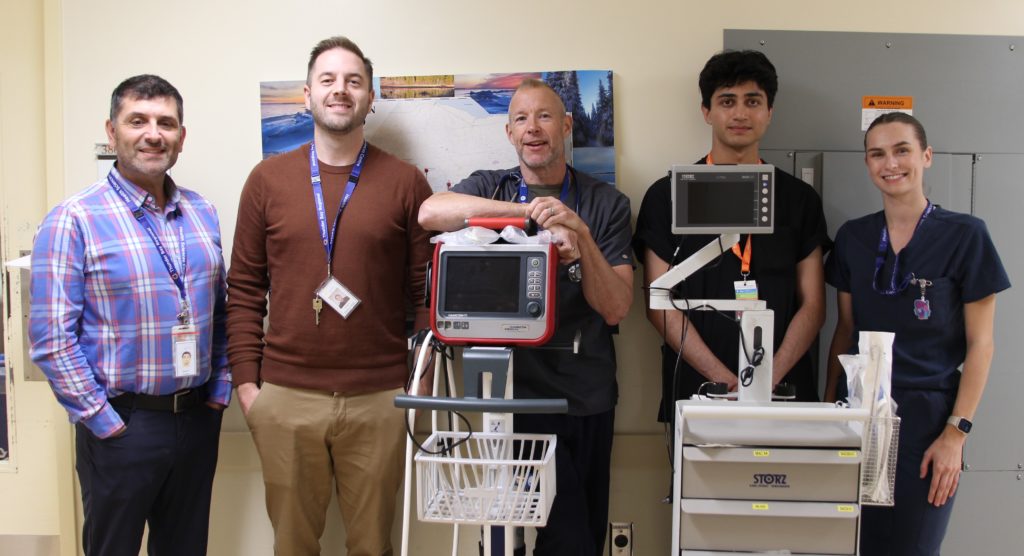
Registered respiratory therapists (RRTs) are highly skilled health care professionals with specialized expertise in the assessment, treatment, and management of patients with breathing and cardiopulmonary conditions. They play a crucial role in helping patients breathe easier and recover safely through their advanced knowledge and compassionate care.
At Thunder Bay Regional Health Sciences Centre (TBRHSC), RTs are hard at work 24 hours a day, seven days a week, caring for patients of all ages across every area of the Hospital. From the Intensive Care Unit and Emergency Department to the Operating Room, NICU, outpatient clinics, and even home care, RTs are an essential part of every team.
They respond to high-risk deliveries, traumas, and medical emergencies, provide support during conscious sedations and cardioversions, perform arterial blood gases and catheter insertions, and manage therapies such as non-invasive ventilation (CPAP/BiPAP) and high-flow oxygen. Their dedication and expertise help ensure the best possible outcomes for every patient, every time.
This Respiratory Care Week, we recognize our transport RTs for their dedication, adaptability, and commitment to excellence. Their work doesn’t stop at the hospital doors—it’s on the move, saving lives wherever they’re needed most.
Leadership Roles for RTs
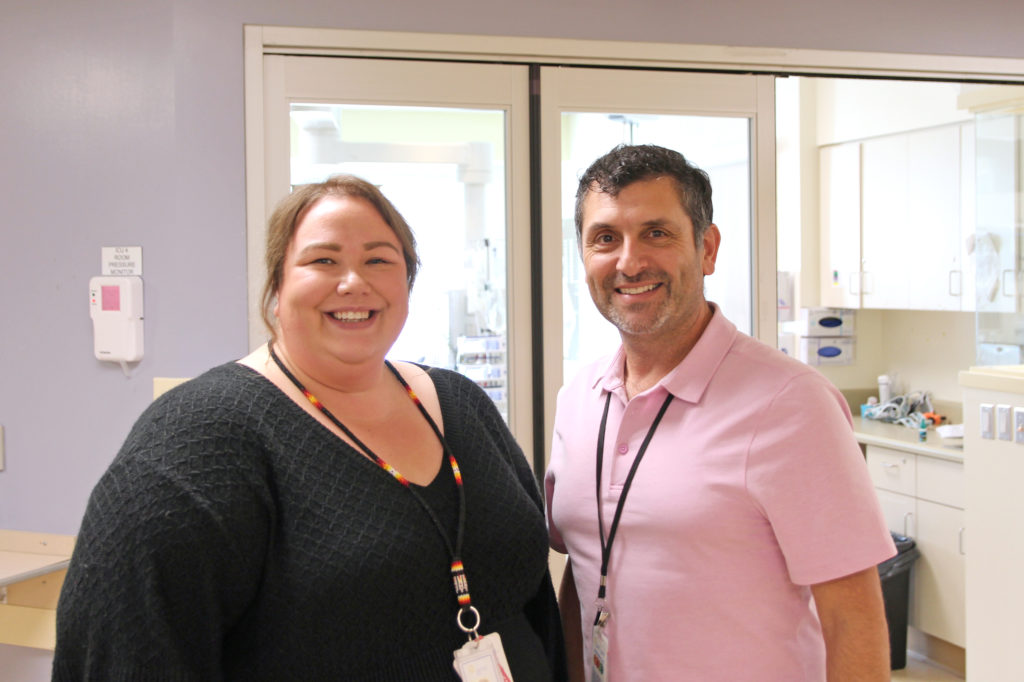
Respiratory therapists use their skills and knowledge to take on various leadership roles throughout our Hospital. Darolyn Hryciw is the RRT Charge and her role consists of managing day-to-day operations, scheduling, and equipment and supplies management. Bruno Tassone is the Critical Care and Respiratory Services Coordinator. He is responsible for the day-to-day operations of the Respiratory Care department, Regional Critical Care Response (RCCR) as well as the Medical Emergency Team. Jennifer Gadioma is an Interprofessional Educator. Within her role, she helps advance the practice of health care professionals’ organization wide by providing hospital-wide education. Shawn Jacobson is the Education Lead and he organizes all the education and clinical placements for the Respiratory Therapy students from Canadore College. Aaron Giba is the Professional Practice Lead for the Respiratory Department, and provides leadership and guidance in everyday practice as well as policy development and implementation.
Operating Room
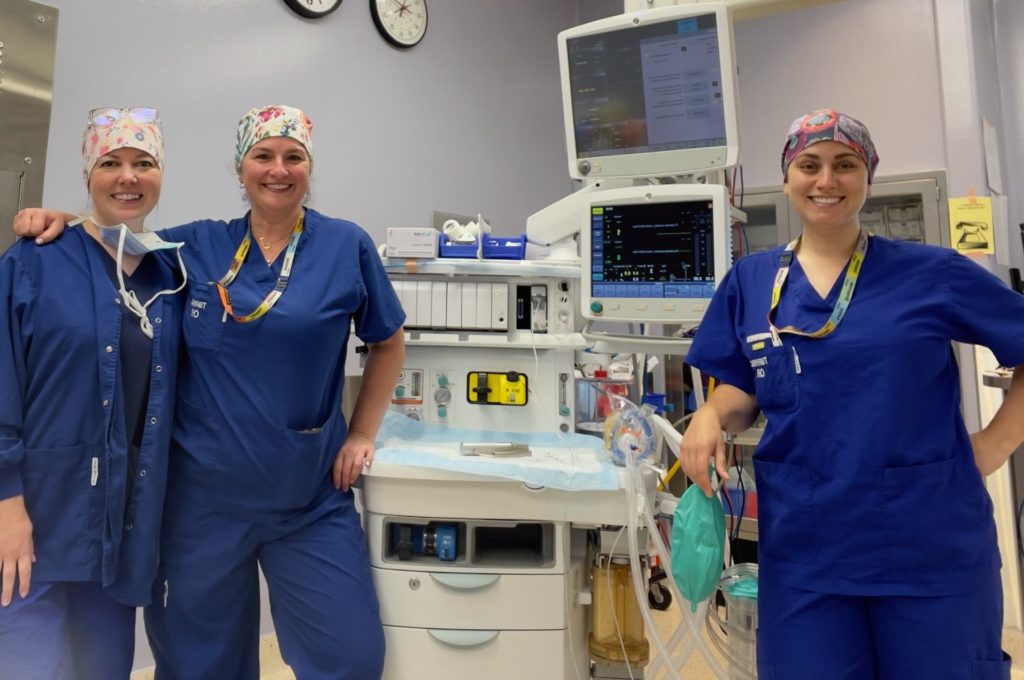
The anesthesia assistant (AA) is an essential member of the Operating Room (OR) team. AAs are respiratory therapists who have an additional 18 months of training in advanced anesthesia skills in order to facilitate the administration of anesthetic services, both in an out of the OR. Within the OR, they assist with the setup and induction of anesthesia for more complex surgical cases. Their duties include advanced airway management, line insertion as well as assistance with epidural/spinal blocks, peripheral nerve blocks and difficult intubation protocols. AAs can prepare and administer a variety of anesthetic agents and manage stable patients under anesthesia while the anesthetist performs other duties within the OR. They also maintain and troubleshoot all anesthesia equipment and are often called upon to assist with anesthetic emergencies. They prepare the OR for malignant hyperthermia cases and are well-versed in the management of this rare but life-threatening emergency. Outside of the OR, AAs set up and assist with sedation cases in diagnostic imaging that require advanced monitoring and generally facilitate any off-service anesthetic duty. The introduction of AAs have allowed anesthesia services to expand at a time when anesthesia resources are very limited.
Outpatient Clinics, Stress lab, Pulmonary Function Testing Lab
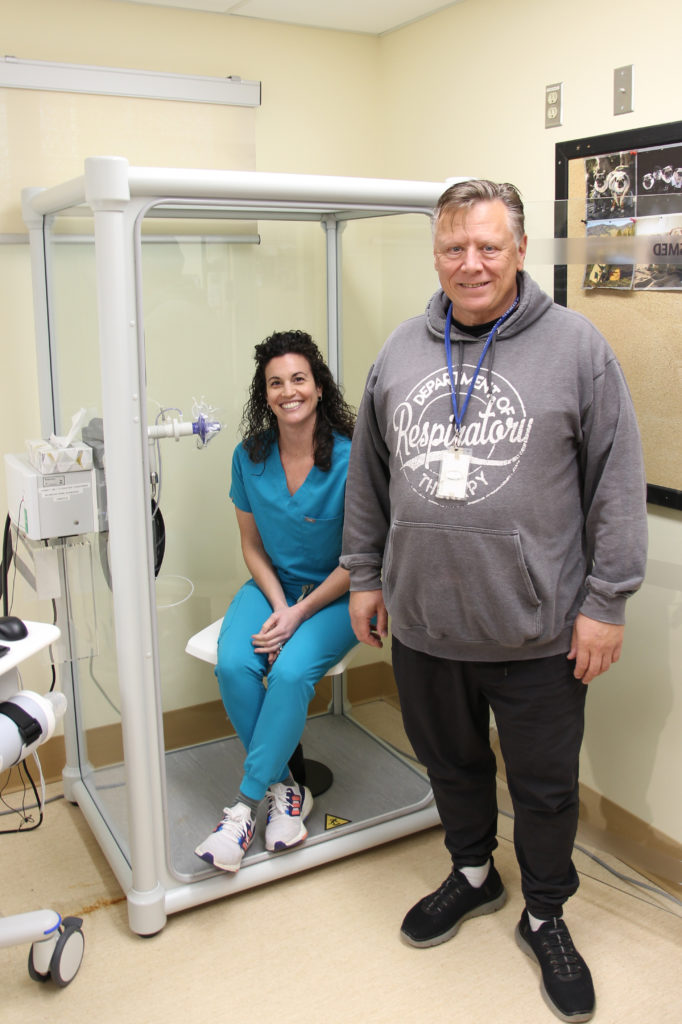
Our Respiratory Therapy team plays a vital role across several specialized areas, including the Stress Lab, Pulmonary Function Lab, and Outpatient Clinic. In the Stress Lab, they monitor patients during exercise or pharmacologic stress tests to evaluate how the heart and lungs perform under pressure, helping diagnose conditions like exercise-induced asthma or cardiac issues. In the Pulmonary Function Lab, RTs perform a range of lung function tests such as spirometry and lung volume measurements to assess breathing capacity and identify respiratory diseases like COPD and asthma. Meanwhile, in the Outpatient Clinic, Respiratory Therapists provide ongoing care and education for patients managing chronic respiratory conditions, ensuring they understand their treatments and maintain optimal lung health outside the hospital setting. Together, these services allow RTs to deliver comprehensive respiratory care that supports diagnosis, treatment, and long-term management.
Paediatric Emergency Transport Team
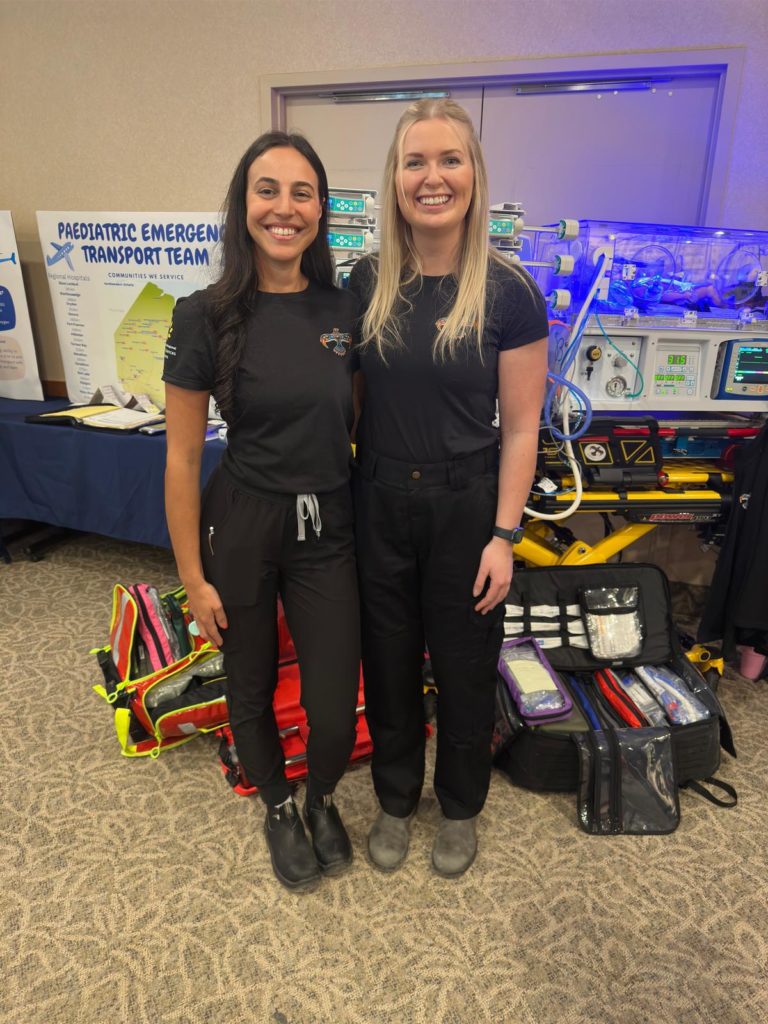
Respiratory therapists on our Paediatric Emergency Transport Team are the critical link between bedside and destination, ensuring patients receive expert respiratory care every step of the way. Whether traveling by ground or air, these skilled clinicians manage ventilators, secure airways, and monitor patients with precision and calm under pressure. Their expertise allows for seamless, safe transitions for our most vulnerable patients — infants and children — often in the most challenging environments.
This Respiratory Therapy Week, we recognize our transport RTs for their dedication, adaptability, and commitment to excellence. Their work doesn’t stop at the hospital doors—it’s on the move, saving lives wherever they’re needed most.
